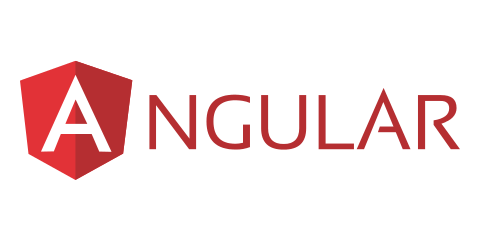Course Description:
Angular is an application design framework and development platform for creating efficient and sophisticated single-page apps. It delivers ways to build applications and reuse your code and abilities to build apps for any deployment target. For web, mobile web, native mobile and native desktop. It achieves the maximum speed possible on the Web Platform today, and take it further, via Web Workers and server-side rendering. Angular puts you in control over scalability. Meet huge data requirements by building data models on RxJS, Immutable.js or another push-model.
Introduction
- What is Angular?
- Installation
- Project Setup and First App
- Working on the First App
Typescript Fundamentals
- Introduction
- Using Types
- Classes
- Interfaces
- Generics
- Modules
Angular Fundamentals
- Structure of an Angular App
- Components
- Understanding the Role of AppModule and Component Declaration
- Using Custom Components
- Creating Components with the CLI & Nesting Components
- Working with Component Templates
- Working with Component Styles
- What is Databinding?
- String Interpolation
- Property Binding
- Property Binding vs String Interpolation
- Event Binding
- Passing and Using Data with Event Binding
- Two-Way-Databinding
- Combining all Forms of Databinding
- Practicing Databinding
- Understanding Directives
- Using ngIf to Output Data Conditionally
- Enhancing ngIf with an Else Condition
- Styling Elements Dynamically with ngStyle
- Applying CSS Classes Dynamically with ngClass
- Outputting Lists with ngFor
- Getting the Index when using ngFor
Working on a Project
- Project Introduction
- Planning the App
- Installing Bootstrap
- Setting up the Application
- Creating the Components
- Using the Components
- Adding a Navigation Bar
- Alternative Non-Collapsable Navigation Bar
- Creating a Model
- Adding Content to the Components
- Outputting a List with ngFor
- Displaying Details
Components & Databinding
- Introduction to Databinding
- Splitting Apps into Components
- Property & Event Binding Overview
- Binding to Custom Properties
- Assigning an Alias to Custom Properties
- Binding to Custom Events
- Assigning an Alias to Custom Events
- Custom Property and Event Binding Summary
- Understanding View Encapsulation
- Using Local References in Templates
- @ViewChild() in Angular
- Getting Access to the Template & DOM with @ViewChild
- Projecting Content into Components with ng-content
- Understanding the Component Lifecycle
- Understanding Lifecycle Hooks
- Lifecycle Hooks and Template Access
- @ContentChild() in Angular
- Getting Access to ng-content with @ContentChild
Working on the Project
- Introduction
- Adding Navigation with Event Binding and ngIf
- Passing Data with Property Binding
- Passing Data with Event and Property Binding (Combined)
- Adding FormsModule
- Allowing the User Interaction
Angular Directives
- ngFor and ngIf Recap
- ngClass and ngStyle Recap
- Creating a Basic Attribute Directive
- Using the Renderer to build a Better Attribute Directive
- Using HostListener to Listen to Host Events
- Using HostBinding to Bind to Host Properties
- Binding to Directive Properties
- Understanding Structural Directives
- Building a Structural Directive
- Understanding ngSwitch
- Building and Using a Dropdown Directive
Services and Dependency Injection
- Introduction to Services
- Creating a Logging Service
- Injecting the Logging Service into Components
- Creating a Data Service
- Understanding the Hierarchical Injector
- Injecting Services into Services
- Using Services for Cross-Component Communication
Working on the Project
- Introduction
- Setting up the Services
- Managing methods in a Service
- Using a Service for Cross-Component Communication
- Adding the List Service
- Using Services for Pushing Data from A to B
- Passing data from one Component to another (via a Service)
Routing
- Introduction
- Setting up and Loading Routes
- Navigating with Router Links
- Understanding Navigation Paths
- Styling Active Router Links
- Navigating Programmatically
- Using Relative Paths in Programmatic Navigation
- Passing Parameters to Routes
- Fetching Route Parameters
- Fetching Route Parameters Reactively
- Understanding Route Observables
- Passing Query Parameters and Fragments
- Retrieving Query Parameters and Fragments
- Setting up Child (Nested) Routes
- Using Query Parameters
- Configuring the Handling of Query Parameters
- Redirecting and Wildcard Routes
- Redirection Path Matching
- Outsourcing the Route Configuration
- An Introduction to Guards
- Protecting Routes with canActivate
- Protecting Child (Nested) Routes with canActivateChild
- Using a Fake Auth Service
- Controlling Navigation with canDeactivate
- Passing Static Data to a Route
- Resolving Dynamic Data with the resolve Guard
- Understanding Location Strategies
Working on the Project
- Planning the General Structure
- Setting Up Routes
- Adding Navigation to the App
- Marking Active Routes
- Fixing Page Reload Issues
- Child Routes: Challenge
- Adding Child Routing Together
- Configuring Route Parameters
- Passing Dynamic Parameters to Links
- Styling Active Recipe Items
- Adding Editing Routes
- Retrieving Route Parameters
- Programmatic Navigation to the Edit Page
- One Note about Route Observables
Understanding Observables
- Analyzing Angular Observables
- Getting Closer to the Core of Observables
- Building a Custom Observable
- Errors & Completion
- Understanding Operators
- Subjects
- Improving the Reactive Service with Observables (Subjects)
Handling Forms in Angular
- Introduction
- Template-Driven (TD) vs Reactive Approach
- An Example Form
- TD: Creating the Form and Registering the Controls
- TD: Submitting and Using the Form
- TD: Understanding Form State
- TD: Accessing the Form with @ViewChild
- TD: Adding Validation to check User Input
- Built-in Validators & Using HTML5 Validation
- TD: Using the Form State
- TD: Outputting Validation Error Messages
- TD: Set Default Values with ngModel Property Binding
- TD: Using ngModel with Two-Way-Binding
- TD: Grouping Form Controls
- TD: Handling Radio Buttons
- TD: Setting and Patching Form Values
- TD: Using Form Data
- TD: Resetting Forms
- Practicing Template-Driven Forms
- Introduction to the Reactive Approach
- Reactive: Setup
- Reactive: Creating a Form in Code
- Reactive: Syncing HTML and Form
- Reactive: Submitting the Form
- Reactive: Adding Validation
- Reactive: Getting Access to Controls
- Reactive: Grouping Controls
- Fixing a Bug
- Reactive: Arrays of Form Controls (FormArray)
- Reactive: Creating Custom Validators
- Reactive: Using Error Codes
- Reactive: Creating a Custom Async Validator
- Reactive: Reacting to Status or Value Changes
- Reactive: Setting and Patching Values
Working on the Project
- TD: Adding a Form
- Adding Validation to the Form
- Allowing the Selection of Items in the List
- Loading the List Items into the Form
- Updating existing Items
- Resetting the Form
- Allowing the the User to Clear (Cancel) the Form
- Allowing the Deletion of List Items
- Creating the Template for the (Reactive) Edit Form
- Creating the Form For Editing a Component
- Syncing HTML with the Form
- Adding Controls to a Form Array
- Validating User Input
- Submitting the Edit Form
- Adding a Delete and Clear (Cancel) Functionality
- Redirecting the User (after Deleting a Recipe)
- Adding an Image Preview
- Deleting an Item
- Deleting all Items in a FormArray
Using Pipes to Transform Output
- Introduction
- Using Pipes
- Parametrizing Pipes
- Where to learn more about Pipes
- Chaining Multiple Pipes
- Creating a Custom Pipe
- Parametrizing a Custom Pipe
- Example: Creating a Filter Pipe
- Pure and Impure Pipes
- Understanding the "async" Pipe
Making HTTP Requests - RxJS
- Introduction
- How Does Angular Interact With Backends?
- The Anatomy of a Http Request
- Backend (Firebase) Setup
- Sending a POST Request
- GETting Data
- Using RxJS Operators to Transform Response Data
- Using Types with the HttpClient
- Outputting Posts
- Showing a Loading Indicator
- Using a Service for Http Requests
- Services & Components Working Together
- Sending a DELETE Request
- Handling Errors
- Using Subjects for Error Handling
- Using the catchError Operator
- Error Handling & UX
- Setting Headers
- Adding Query Params
- Observing Different Types of Responses
- Changing the Response Body Type
- Introducing Interceptors
- Manipulating Request Objects
- Response Interceptors
- Multiple Interceptors
Working on the Project
- Introduction
- Backend (Firebase) Setup
- Setting Up the DataStorage Service
- Storing Data
- Fetching Data
- Transforming Response Data
- Resolving Data Before Loading
Authentication & Route Protection
- Introduction
- How Authentication Works
- Adding the Auth Page
- Switching Between Auth Modes
- Handling Form Input
- Preparing the Backend
- Preparing the Signup Request
- Sending the Signup Request
- Adding a Loading Spinner & Error Handling Logic
- Sending Login Requests
- Login Error Handling
- Creating & Storing the User Data
- Reflecting the Auth State in the UI
- Adding the Token to Outgoing Requests
- Attaching the Token with an Interceptor
- Adding Logout
- Adding Auto-Login
- Adding Auto-Logout
- Adding an Auth Guard
Dynamic Components
- Introduction
- Adding an Alert Modal Component
- Understanding the Different Approaches
- Using ngIf
- Preparing Programmatic Creation
- Creating a Component Programmatically
- Understanding entryComponents
- Data Binding & Event Binding
Angular Modules & Optimizing Angular Apps
- Introduction
- What are Modules?
- Analyzing the AppModule
- Getting Started with Feature Modules
- Splitting Modules Correctly
- Adding Routes to Feature Modules
- Component Declarations
- The ShoppingList Feature Module
- Understanding Shared Modules
- Understanding the Core Module
- Adding an Auth Feature Module
- Understanding Lazy Loading
- Implementing Lazy Loading
- More Lazy Loading
- Preloading Lazy-Loaded Code
- Modules & Services
- Loading Services Differently
- Ahead-of-Time Compilation
Deploying an Angular App
- Introduction
- Deployment Preparation & Steps
- Using Environment Variables
- Deployment Example: Firebase Hosting
Angular Training center in West Delhi, Uttam nagar. Best certified computer course curriculum for professional learning institute near Dwarka, Uttam Nagar, Jankapuri, Tilak Nagar, Subhash Nagar, Tagore Garden, Rajouri Garden, Ramesh Nagar, Moti Nagar, Kirti Nagar, Shadipur, Patel Nagar, Rajendra Place, Karol Bagh, Jhandewalan, Ramakrishna Ashram, Connaught Place, vikaspuri, najafgarh, Delhi Cantt, Dhaula Kuan, Palam Colony, Palam Villag, Dabri, Hari Nagar, Fateh Nagar, Raja Garden, Punjabi Bagh, Shivaji Park, Paschim Vihar, Peeragarhi, Inderlok, Netaji Subhash Place, Pitampura, Rohini, Chandni Chowk, New Delhi, East Delhi, North Delhi, West Delhi.











